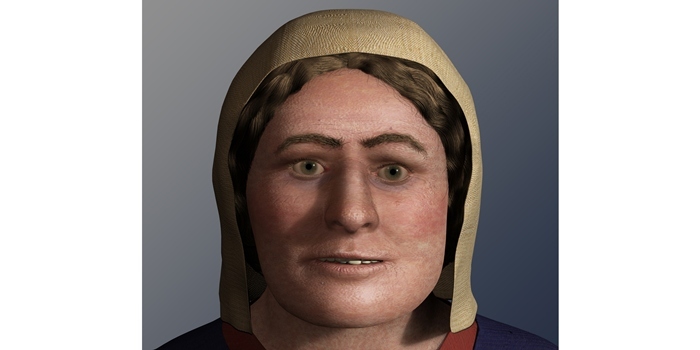Academics at Dundee University have helped recreate the most accurate picture of Viking life yet as part of a £150,000 investment at York’s Jorvik Viking Centre.
York Archaeological Trust, owner of Jorvik, has used the most advanced scientific and archaeological research techniques to bring York’s Vikings to life and allow the public to come face to face with the most accurate picture of Vikings at two new exhibitions at the centre, launched this week.
The trust enlisted the skills of academics at Dundee University to produce a facial reconstruction of a female skeleton one of four excavated at Coppergate in York over 30 years ago.
Caroline Erolin, lecturer at the university’s centre for anatomy and human identification, said, “We laser scanned the skull to create a 3D digital model on to which we could produce the reconstruction.
“The reconstruction process is carried out utilising specialist computer equipment which allows the user to ‘feel’ what they are modelling on screen. The anatomy of the face is modelled in virtual clay from the deep muscles to the superficial.
“I was pleased to be involved in this project as 10 years previously, as a medical art student, I produced 2D reconstruction artwork of an individual from Fishergate in York as a part of my Masters research project, which ended up on display at Jorvik.”
Janice Aitken, lecturer and researcher at Dundee University, added the lifelike finishing touches.
She said, “I use the same sort of software as is used to create 3D animations in the film industry. I digitally created realistic eyes, hair and bonnet and added lighting to create a natural look.
“It is very satisfying knowing that the work we create at Dundee University will be seen by thousands of visitors to Jorvik and being part of a process which can so vividly help people to identify with their ancestors.”
York Archaeological Trust’s new Investigate Coppergate exhibition examines the Vikings’ diet, displays the Viking facial reconstruction and investigates the diseases from which the Vikings suffered.
The end of the exhibition looks at the final battles of the Viking age in York that heralded the end of that era and the coming of the Normans. It features skeletal remains showing battle wounds and a full skeleton with evidence of severe trauma, alongside discussion about how they died.
Sarah Maltby, of York Archaeological Trust, said, “Archaeological research capabilities have moved on considerably since the original Coppergate excavations which took place over 30 years ago.
“The new exhibition areas mark a shift in how archaeological finds are analysed and the techniques available to researchers. We now have a much more accurate and physical image of what Viking life was like, what they ate, what they wore and even what they looked like.”
